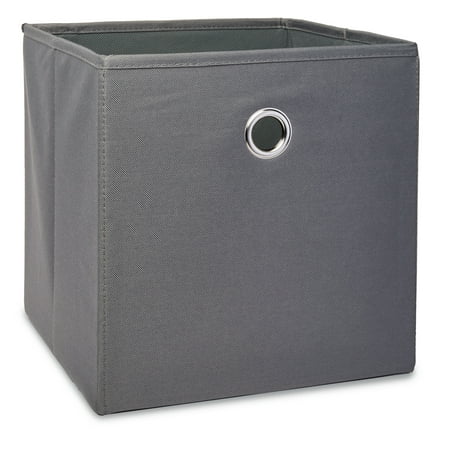Mainstays Collapsible Fabric Cube Storage Bins, 4 Pack, Gray Flannel
Mainstays Collapsible Fabric Cube Storage Bins can help keep your home optimally organized and clean. These fabric cube bins come in a pack of four and measure 10.5 inches long by 10.5 inches deep by 11 inches high making them perfect for organizing school supplies, documents, clothes, books, and more. They are compatible with any of our Mainstays Cube Storage Organizers (sold separately) and are great for keeping bedrooms, living rooms, offices, and dorm rooms sorted and tidy. Available in an array of different colors and designs, there is a color scheme to fit any aesthetic. Pick up these Mainstays Collapsible Fabric Cube Storage Bins today!Getting organized is often a matter of finding the right equipment to store your stuff. Mainstays organization and storage products are suitable for use throughout your home. Some of the products in this section are designed for use in a specific area, such as your closets or kitchen, and you can focus on these specific products if you know what you need. If you don’t yet know what organization and storage products might solve your problems, scroll through the product listings in this section to get inspiration. Product descriptions and names are helpful guides to consider as you browse.





Mainstays Collapsible Fabric Cube Storage Bins, Gray Flannel, Set of 4:Includes 4 storage cubes with handlesAvailable in multiple colors and designs to fit any aestheticPerfect for storing books, documents, clothes, and moreCompatible with any of our Mainstays Cube Storage Organizers (sold separately)Dimensions: 10.5″ L x 10.5″ D x 11″ H

Reviews
There are no reviews yet.